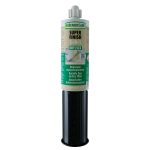FREQUENTLY ASKED QUESTIONS DRY FIX®UNI

30
September
Below you can find our most Frequently Asked Questions regarding our DRY FIX® UNI, the elastic primer for DRY FLEX® and BIO FLEX™.
Do all Repair Care products require pre-treatment with DRY FIX® UNI?
Priming with the DRY FIX® UNI is always necessary when using the DRY FLEX® 1, 4, 16 and BIO FLEX™ ALLROUND and COOL. With the DRY FLEX® SF, and DRY SEAL™ MP it is not necessary to use the DRY FIX® UNI.
What does the DRY FIX® UNI do?
The DRY FIX® UNI ensures a firm anchoring of the resin in the substrate. Due to its liquid character, the product easily absorbs into the wood and ensures stabilisation of the ‘loose’ wood fibres. As a result, the resin adheres much better to the wood. In addition, the DRY FIX® UNI forms a buffer against moisture that may rise from the substrate and thus could hinder the adhesion during the curing of the resin.
How much time do I have after priming to apply the DRY FLEX®?
Always leave the DRY FIX® UNI on for a minimum of 20 minutes to penetrate into the wood fibres. At a temperature of 20°C you then have 24 hours to apply the DRY FLEX® resin of your choice. If you exceed the time of 24 hours for whatever reason, and the DRY FLEX® is not applied, simply sand the surface where the DRY FIX® was applied to remove the layer, and reapply as needed.
Why do I have to prime?
Repair Care DRY FLEX® only works well if it adheres well to the wood. The resin itself is too firm to penetrate well into the wood fibres and thus form a strong bond with the wooden substrate. That is why you first apply the DRY FIX® UNI, this ensures optimum adhesion of the repair resin.
How do I apply the product?
The DRY FIX® UNI comes in two bottles: a large A component and a smaller B component. When dispensing, use the correct materials (EASY•Q™ MIX & FIX cup and spatula) and pay close attention to the mixing ratio. Dosing is very easy thanks to the indicators on the bottles. With one indicator notch of component A and one indicator notch in component B, you immediately have the right mixing ratio. Turn the bottle upside down, read the liquid level and squeeze the bottle lightly until the liquid level reaches the next mark. Mix the two components with a wooden spatula and then apply the liquid thinly to all surfaces of the wood that will later come into contact with the resin.












